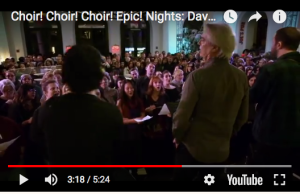Note (9-18-24): An expanded version of this post is included in Greg Dember’s book, Say Hello to Metamodernism!.
Greta Gerwig’s film Lady Bird won the 2017 Golden Globe Awards for Best Comedy/Musical and Best Actress (Saoirse Ronan). This may be the first film that treats the transition from postmodernism to metamodernism during the dawn of The Aughts as history, with a main character in effect struggling to invent her own metamodern sensibility before the rest of her world has quite gotten on board.
Set in 2002, it tells the story of Christine, a suburban Sacramento high school senior (semi-autobiographically modeled after Gerwig) doing the quirky thing in a dreary world. She insists on being called Lady Bird. She runs for Class President every year knowing full-well she’ll lose. Her hair is dyed pink but this doesn’t mean she’s a countercultural punk, and it doesn’t mean she is not. She’s the kind of person who will throw the door open and jump out of a moving car when she feels misunderstood by her mom. Because that’s how intense life is. Everybody around her thinks she’s kind of weird, but due largely to Lady Bird’s efforts to bridge the gap, and her earnest, internal search for what’s real, and in spite of her occasional screw-ups, they find ways to connect with her.
In its approach to story-telling, the film itself has a metamodern flavor. Similar to a lot of television typical of the metamodern period (think Six Feet Under, Breaking Bad, Mr. Robot), it treats its population of characters fractally, with those who enter the narrative initially as peripheral figures ending up revealing greater depth and detail, making them seem like they too deserve a primary role in a show of their own.
The broad success and off-the-charts glowing reviews – 99% on Rotten Tomatoes is unheard of – garnered by this quiet, honest film, with a quirky female protagonist who is not merely a flattened, manic-pixie-dream-girl stereotype, but reveals reasons for those quirks, may be indicative of a more general acceptance of metamodern tropes and sensibilities in the culture at large.



